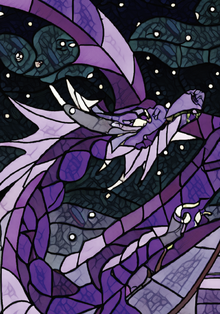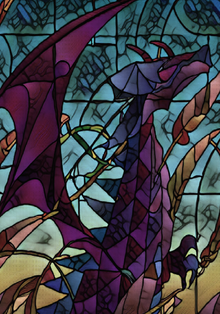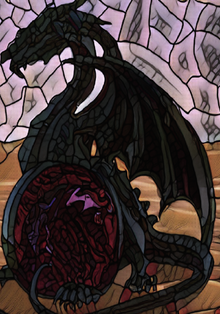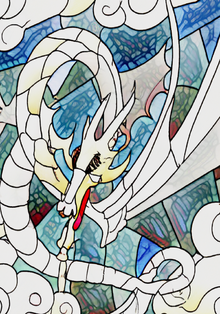More actions
mNo edit summary |
No edit summary |
||
| Line 1: | Line 1: | ||
{{Info religion | {{Info religion | ||
|image = | |image = noimg.png | ||
|pronunciation = | |pronunciation = Es-tel-lon | ||
|origins = | |origins = The Prophetess [[Talea]] | ||
|deities = | |deities = | ||
|subsects = | Various | ||
|subsects = N/A | |||
|}} | |}} | ||
==Origins== | |||
Exist Worship (Estellon) is understood to have gone back to the beginning of history, but its most modern iteration has very clear origins. In the earliest days of the Altalar Principalities, various folk religions competed for dominance. A single charismatic figure named Talea stepped forward and preached the word of Estel, her timeless creator dwelling in slumber beyond the world. Not just a prophetess, Talea was also a skilled general and politician. Her campaigns swept the land, saw the great war between the Altalar and the Dewamenet end in victory, and led to the creation of the earliest form of the Allorn Empire. At Talea's sides were the Gods and Goddesses, Estel's Pantheon, who continued to exist and offer guidance to the faithful after her death. Over the ten thousand years of the Allorn Empire's lifespan, they would disappear one by one as the decadence, Cultism, and separatism of the Allorn increased, until only a few were left by the time of Cataclysm. In the modern day, three hundred years after Cataclysm, a figure claiming to be the reborn Talea has swept through Daen followed by the Gods and resurrected a smaller Allorn state, which is still regaining its strength. Estellon worshipers around the world are bitterly divided on whether this Talea and her Gods are legitimate, or imposters wearing their appearances to garner legitimacy. | |||
== | ==Core Identity== | ||
Estellon is a [[Religion]] centered around the struggle and journey of chasing perfection, the eventual climax of that journey, and all the skills and talents gained along the way. Estellon is not a religion that demands the worshiper live by a set of virtues like many other religions, but rather demands a high degree of success and punishes failure to achieve and reach a greater potential. | |||
===Tenets=== | |||
* '''Bravery:''' Estellon faithful are demanded to be brave in the face of adversity, and more specifically to protect each other, but more importantly, one's own soul's pureness from evil and corruption. | |||
* '''Calm:''' Estellon faithful are demanded to be calm and never quick to act in emotion and anger, to remain objective in reviewing the facts, and to act only in a measured manner with preparation. | |||
* '''Pleasure:''' Estellon faithful are demanded to see life as worth living, and for every sweet bounty to be tasted so long as it does not infringe on other [[Nelfin]] (not other [[Races]] particularly). | |||
* '''Ambition:''' Estellon faithful are demanded to always be bound by ambition to be the best at something, whether it is combat, magic, creating floral displays, or baking cooking. No mediocrity allowed. | |||
* '''Diligence:''' Estellon faithful are demanded to be diligent in their service and their work, to be hard working and hard earning the skills they will receive over the centuries of time spent. | |||
* '''Revenge:''' Estellon faithful are demanded never to let a slight sit, and to always make due justice for each wrong committed onto themselves, their next of kin, or their kin in general. | |||
* '''Greed:''' Estellon faithful are demanded not strictly to be greedy, but never to be content, and to always be in a state of want, for a content life leads to decadence and laziness. | |||
* '''Deceitful:''' Estellon faithful aren't strictly demanded to lie, but rather to never be always truthful if it is self-sabotaging, and to control the narrative and view of objective truth around them. | |||
* '''Ambitious:''' Estellon faithful are demanded to always remain ambitions with their goals for themselves, to always seek out new skills to gain, to improve, and to make a name for one's self. | |||
* '''Destiny:''' Estellon faith prescribes that each person born has a great destiny that only they can unlock, and when they reach it, they will re-incarnate as a more important person. | |||
* '''Perfection:''' Estellon faith highly praises perfection, or at least the conceptual thought of perfection (meaning, until something better is found). Perfection itself is considered holy and divine. | |||
* '''Sanctuary:''' Estellon faith prescribes a patronizingly protecting ideology to its followers which preaches the idea that the Nelfin are somehow uniquely more capable of protecting the world than others. | |||
===Beliefs=== | |||
* '''Narrative:''' Estellon is a religion that starts with Estel creating everything in the eyes of the Estellon faithful, followed by Estel birthing her daughter [[Talea]] through immaculate conception, after which she fell asleep, dreaming the other Estellon Pantheon into existence. The Pantheon is there to challenge the faithful to be a better version of themselves, to strive to be better, and to unlock that holy destiny and fate that is woven for every newborn by the Gods. Then, the Goddess of Death will lift the dead souls to the afterlife, where they will enter a phase of contemplation for years, or decades, or even centuries, before Cemaan weaves a new fate for them, drags them from the afterlife, and re-incarnates their soul into a newborn, wealthier if their life was full of accomplishments, poorer if it was found lacking. | |||
* '''Canon Evil:''' Canon evil in Estellon is hard to pin down, though the [[Void Arken]] come pretty close, and the [[Void Gods]] are definitely very high up. The general concept of evil in Estellon is more the idea of turning away from the faith and abandoning the virtues and chase for perfection. Since Void possession often causes this to happen, the worst evil to befall a faithful is to be possessed or worse, to be [[Kathar]]. | |||
* '''Identity:''' Estellon has no real concept of sex or gender, nor does it have a view on sexual orientation. If anything, Estellon encourages the faithful to experiment with all these kinds of things, and generally just kind of do whatever they feel like. This is often why [[Ailor]] thing that male [[Altalar]] wear women's clothes, and vice versa. Styling and society wise, the Estellon are fairly gender blind. | |||
* '''Conversion:''' Converting away from Estellon is a strange concept, because it did not exist for thousands of years prior to the Kathar appearing and [[Void Worship]] becoming institutional. As such, the slow-to dogmatically decide Estellon priesthood, 500 years later, still hasn't decided on an official stance on conversion of non-Nelfin, or converting away from Estellon, though [[Unionism]] is marked as a particularly vile religion to convert to, because it subverts the ideology of Nelfin superiority in Estellon. | |||
* '''Sins & Taboo:''' Sins and Taboos in Estellon all invariably relate to being lazy, not getting anything done, being unwilling to work, and generally being careless about one's future. | |||
== | ==Gods and Goddesses== | ||
AAAA | |||
== | ===Aurora, Arbitrator of Nature=== | ||
{| | {| | ||
|[[File: | |[[File:Viletdragon.png|220px|thumb|left]] | ||
| | | | ||
*'''Identity:''' Aurora is the Dragon of the Craters of Evolution, places where creatures are made, and where nature is eternal. Dragon worshipers believe Aurora designed every little creature, and every creature that has come from them, and continues to experiment with the possibilities in her hidden sanctum. She is also the Dragon of wilful disinterest in the Occult and Infected. | |||
*'''Racial:''' Aurora is strongly represented among the Isldar, a Race that she favors as her own, and to which she is intricately linked. Prior to cleansing, Aurora was known as Frisit, though in modern times, this is believed to have been an imposter who imprisoned Aurora’s soul and made the Isldar commit terrible acts in the name of Death, eventually causing the split with the Death Isldar. She considers the Death Isldar her mortal enemies, and the reason for the civil war. | |||
*'''Clade:''' Aurora's name in the Isldar language is Asaph, both names are commonly used. She also has the following supporting Dragons: Acilia of the Birds, Aelia of the Mammals, Aegidius of the Reptiles, Aerthirn of the Amphibians, Aurav of the Invertebrates, Aureliu of the Fish, and Aemilia of the Skyborn. These Dragons also have Isldarrin names: Altuya, Althadeïa, Alsalaahy, Albarmaay, Aleawac, Alsamac, Alsama, though even in cosmopolitan places like Regalia, the non-Isldar names are favored. | |||
*'''Home:''' Aurora’s penultimate home is the Crater of Creation, though supposedly there are several. Supposedly, because no mortal has ever laid eyes on a functional Crater of Creation, and the Dragons take great pains to hide the locations from mortals. As such, Aurora lacks a traditional Temple, though the Isldar cities in Ellador are rife with Temples to Asaph (and thus Aurora) which double for other Races, for those bold enough to brave the Isldar wastes and find them. | |||
*'''Occult:''' Aurora’s (and by extension her other Dragons) stance towards the Occult or the Infection, is blissful ignorance. Aurora concerns herself far too much with the perpetuation of life, and believes that her work must continue, while other Dragons deal with the implicit problem. As such, Aurora worshipers take a very apathetic stance towards the Occult, though tend to favor more isolationism and staying away from them, rather than actively fostering relations with them. | |||
*'''Themes:''' Aurora’s main themes are the midnight sky, stars, the heavens at night, creation, design, random events and occurrences, and winter. Particularly the aspect of winter is a more modern association due to her inherent favor towards the Isldar. By origins however, she is the Violet Dragon of the Midnight Sky, and before many associated her with the pale white Dragon Frisit, it was said her scales were adorned with the sparkles of a thousand stars, indistinguishable from the night sky. | |||
*'''Worship:''' Aurora has never favored active worship of herself, but Dragon Worshipers still engage in active worship, mainly by the act of the hunt. While Aurora is a Dragon of creation, she is not explicitly a Dragon of the preservation of creation, and as such, is seen as more apathetic towards what happens with her creations when they are unleashed on the world. What she does care for however, is how effective they are at dominating the food chain. To be able to offer up evidence of this fact to a statue dedicated to her is seen as worship. | |||
*'''History:''' Aurora lived in her Crater of Creation for most of history, being merely a footnote until the Altalar started hunting down the Dragons in the Allorn Empire. Aurora fled north with her Dragons and the Dregodar (a cult of Dragon worshiping Altalar) until she eventually perished in a battle against the Dwarves in Ellador. Aurora’s soul was returned by the Dragons Regulus and Renite during their quest to revive the Dragons, and resumed her position among the Isldar, initiating a civil war among them over old beliefs. | |||
|} | |||
===Regulus, Crownbearer of Command=== | |||
{| | |||
|[[File:Reguolus.png|220px|thumb|left]] | |||
| | |||
*'''Identity:''' Regulus is the Dragon of Centralization, organization of the Draconic cause, and the functioning of all Dragon installations and forces. Dragons do not function under an autocracy, so it is not quite true that Regulus is King among Dragons, though he effectively functions as one, while maintaining the Ley Systems, as well as the basic functioning of reality around the world, or so Dragon Worshipers believe. Regulus is the Dragon of benign survival of the Occult and the Infected. | |||
*'''Racial:''' Regulus is strongly represented among the Ailor, a Race guided by Regulus through history, and returned to in the modern era. Regulus has a long and complicated past with the Anglian people of the Regalian Archipelago, and is also linked both to the founding of the Regalian Empire, and the Regalian Imperial Throne, due to the current incarnation of Regulus being a member of the Imperial Family. | |||
*'''Clade:''' Regulus has no racial name, though he is sometimes called Cedromar so as not to dehumanize the current incarnation. Regulus has the following supporting Dragons: Renita of Gravity, Rosa of the Weather, Romalia of Matter, Ramirus of Time, Rabanus of Antimatter, Rufinus of Action and Reaction, and Rina of Movement. Many of the functions of Regulus’s Clade are esoteric, so the only tangible presence the living have ever felt was their control over the weather. | |||
*'''Home:''' Regulus has no true Temple, though smaller edifices are being built in Anglia, with the Temple of Soaring Wings in Draackenrust slated to be the largest one when it is done in a few months. In centuries past, Regulus frequented the Anglian countryside and treated the whole province as his Temple, interacting with the locals and those who sought him out with frequency. | |||
*'''Occult:''' Regulus’s stance (which some of his Clade reluctantly agree with), is the concept of benign survival. The idea is that the Occult or Aberrants weren’t at fault for being born this way, or becoming this way, because each person is fated due to forces out of their control. The world of Dragons is centered around the value of life, and if life is to be valued, it should not be disregarded over a matter of Infection. As a result, Regulus believes that the Occult have a right to live free of extermination, though applies this selectively. | |||
*'''Themes:''' Regulus’s main themes are royalty, the weather, crowns, leadership, command, rule, connecting and communicating, and managing the Leystone system. The Central Dragons (a common term for Regulus and his Dragons) are in charge of managing all the Soulcores of the Leystone system, as well as all Dragon Sites, designing and using their functions, and communicating and regulating all the other Dragons to ensure they are on the same page. | |||
*'''Worship:''' Regulus has actively discouraged worship of him, though this has not dissuaded many, and worship of Regulus in a previous reincarnation was rampant in Anglia. It is theorized that as much as a third of the Anglian population still worships Regulus to this day. Regulus worship is mostly done through passive obedience to his design. As Regulus was all about designing the policies of the Dragons, worship of him is simply the act of following this design, and not questioning it. | |||
*'''History:''' Regulus long lived in Anglia, but disappeared around the time of the Five Family Rebellion. Since then, Regulus has been absent, though the Dragonsoul was protected within a Regalian Noble House by the Dragon Wardens who tried to hide its presence from the world. After 300 years, the Dragonsoul was unleashed, and Regulus was found, re-uniting with Renita during the Dragon Crisis, which would eventually result in them going on a quest to revive all other Dragonsouls. | |||
|} | |} | ||
===Marik, Peacewarden of the Dead=== | |||
{| | {| | ||
[[File: | |[[File:Mariksand.png|220px|thumb|left]] | ||
| | | | ||
*'''Identity:''' Marik is the Dragon of mortality and that final end that comes for all, the balance of life and death and the afterlife, order and stability of the world, and enforcer of the cycle that must go on eternally. Marik is claimed by Dragon Worshipers to have designed the demise of Dragons, a concept in which the Dragons voluntarily surrendered their Mantle of Creation, and chose to perish in the spotlight of history (though each Dragon chose their own way out). Marik is the Dragon of the Great Divide for the Occult. | |||
*'''Racial:''' Marik is strongly connected to the Songaskians, in particular because all Songaskians bear a piece of Marik and his fellow Black Dragon souls in them, as they were created when the Black Dragons perished. It is believed that when Marik executed the final end for himself, he had a moment of doubt, and this allowed the forces of Death to corrupt his end, and bring about death for the Qadir. | |||
*'''Clade:''' Marik (also called Masa in the Songaskian language) is supported by the Dragons Mele of the Desert, Maya of Murder, Magnus of Death, Marian of Aging, Milo of Youth, Mencius of Seniority, and Madronna of Birth. These Dragons each also have a name in the Songaskian Language: Diya, Hakili, Tunun, Fonenba, Kakabo, Duniya, and Seben. The Songaskians still strongly prefer to use the Songaskian names of their Dragon patrons, even in Regalia. | |||
*'''Home:''' Marik worship is still very prevalent among the Songaskians who keep alive the lore that they were born from the demise of Dragons. Among the Songaskians, this faith is called Mussaktu or “gratefulness for living”. While they sometimes pretend it is not, it is still part of Dragon Worship. Marik’s largest Temple is the forbidden sanctuary of Jiginni, a massive mountain in the heart of Farahdeen where none may climb to the top, but the base is surrounded by Temples. | |||
*'''Occult:''' Marik’s stance to the Occult is one of the Great Divide, meaning that evil and good among the Occult separates somewhere when an Occult crosses a threshold. This judgment has never been very consistent, but it implies that every Marik worshiper has a boundary which an Occult should not cross, and the moment they cross this boundary they should be hunted down and put out of their misery, but otherwise tolerated as friends. | |||
*'''Themes:''' Marik’s strongest theme is the sun, as Marik worshipers believe that while the Songaskians received part of his and the other Dragons’s souls, that their collective conscience transferred to the sun, watching over the people down below. Sunlight, the desert sands, fire, the color black, martial combat and putting the (un)dead out of their misery are all also important themes of Marik and by extension the other Black Dragons. | |||
*'''Worship:''' Marik Worship is done very frequently and is also very widespread. Many smaller Temples and shrines exist to Marik wherever there are Songaskians, these holy places usually featuring large golden sun disks with which to focus the light of the sun on a central altar, and pray to the sunlight and the sun during the day. The sun is also a strong motif in clothing and tattoos and body paint for Marik worshipers, and his name is invoked when in need of protection or good luck by the faithful. | |||
*'''History:''' Marik’s history is somewhat unclear, as only third-hand Qadir records can be sources, which have an obvious reason to make others distrustful or hostile towards the Black Dragons due to their ongoing conflict. Supposedly, the Qadir were attacked by the Black Dragons of Marik out of nowhere, and waged war on them for centuries, before they defeated Marik, unleashing the Great Storm and birthing the Songaskians. Marik is not yet revived, and likely will not be, as Dragon Worshipers believe Regulus and Renita would need to rip the souls from the Songaskians to do so. | |||
|} | |} | ||
===Severena, Penultimate Defender=== | |||
{| | {| | ||
[[File: | |[[File:Hitedragon.png|220px|thumb|left]] | ||
| | | | ||
*'''Identity:''' Severena is the Dragon of divine protection, of caring, of guidance, of compassion, and of empathy. She is the mother of the Sihai, and claimed by Dragon Worshipers to be the strategist of the Dragons, always helping Regulus see the bigger picture and plan for the correct future out of the hundreds of thousands possible at any given moment. Severena’s plan for the Occult is called the Great Reversal, the first of the two traditionally anti-Occult Dragon ideologies. | |||
*'''Racial:''' Severena is strongly linked with the Sihai Race, supposedly both as creator and as divine protector and director of their fate and future. Despite the demise of the other Dragons, Severena continued to live, albeit in a dream-state where she could no longer directly interact with her people, but had to resort to dreams to communicate. She remains immensely important among the Sihai both culturally and spiritually. | |||
*'''Clade:''' Severena’s Clade is supported by Silvius of Hope, Saccius of Dreams, Sisera of Defying Fate, Sophus of Ambitions, Stasius of Inspiration, Sylianus of Submission, and Summanus of Dominance. While this list uses the Ailor names, even most non-Sihai Dragon Worshipers use the Sihai names for Severena (Saaima) and her Clade: Nishiliu, Beishèn, Ao-Jin, Liu-Xing, Xin-Shidai, Lüra, and Ao-Shun, because Severena has really only ever interacted with the Sihai. | |||
*'''Home:''' If is difficult to pinpoint a single Temple that is great, for each Temple that houses one of the Loong Dragons is grand, as each Loong Dragon save for Sylianus and Summanus remains accessible in the wider Sihai lands (for non Occult at least). Severena’s Temple is generally considered the greatest, as she has seniority over the other White Sky Dragons as matriarch. The Sihai lands are saturated with lesser Temples dedicated to Severena and her Clade. | |||
*'''Occult:''' Severena’s stance on the Occult is the Great Reversal, the idea that the hold of Magic on the world must be pushed back step by step. Sealing corrupted areas, destroying Occult artifacts, cleansing or killing Demonologists and their Demons, and keeping Mages in line and creating as few new Mages as possible are all goals Severena believes in. This can be done either violently or nonviolently. In this way, she is more patient than Caius, but less accepting than Regulus. | |||
*'''Themes:''' Severena’s themes are the color white, the sky, dreams, meditation and places of great tranquility and peace, the defense of her realm from the corrupting influences of the Occult, and through relatively recent developments, jade crystals. Severena remains in active communication with many of her followers and priestly figures, and while her visions are sometimes troubling and unclear, her presence remains felt heavily by the Sihai, more-so than any other Dragon. | |||
*'''Worship:''' Severena worship is to act according to her beliefs. While she is immobile in her slumber, fragments of her psyche organize and guide her followers through whispers in their dreams, to save a world that does not want to be saved and has long since accepted the Occult as safe and natural. Severena is not prayed to for blessings or guidance, as the Sihai consider it ungrateful to beg from their creator, but prayed to in dedication when a step is taken towards one of her goals. | |||
*'''History:''' Severena’s history does not begin or end, as she was around when the Sihai first appeared in the world, and has guided them through every step and every century since. As such, Severena’s history is simply Sihai history. There have been growing concerns as of late that the other Dragons want to wake Severena and her Clade, which the Sihai believe would leave them vulnerable to Demonic invasion and in a very bad position. | |||
|} | |} | ||
===Caius, The Final Judgment=== | |||
{| | {| | ||
[[File: | |[[File:Firedragniric.png|220px|thumb|left]] | ||
| | | | ||
TEXT | |||
|} | |} | ||
===Nox, Weaver of Silk Accords=== | |||
{| | {| | ||
[[File: | |[[File:Silverzaal.png|220px|thumb|left]] | ||
| | | | ||
TEXT | |||
|} | |} | ||
===Valerius, Force for Change=== | |||
{| | {| | ||
[[File: | |[[File:Urlansdragon.png|220px|thumb|left]] | ||
| | | | ||
TEXT | |||
|} | |} | ||
Revision as of 13:29, 10 October 2022
| Dragon Worship | |
|---|---|
 | |
| Religion | |
| Pronunciation | Es-tel-lon |
| Origins | The Prophetess Talea |
| Deities | |
| Various | |
Origins
Exist Worship (Estellon) is understood to have gone back to the beginning of history, but its most modern iteration has very clear origins. In the earliest days of the Altalar Principalities, various folk religions competed for dominance. A single charismatic figure named Talea stepped forward and preached the word of Estel, her timeless creator dwelling in slumber beyond the world. Not just a prophetess, Talea was also a skilled general and politician. Her campaigns swept the land, saw the great war between the Altalar and the Dewamenet end in victory, and led to the creation of the earliest form of the Allorn Empire. At Talea's sides were the Gods and Goddesses, Estel's Pantheon, who continued to exist and offer guidance to the faithful after her death. Over the ten thousand years of the Allorn Empire's lifespan, they would disappear one by one as the decadence, Cultism, and separatism of the Allorn increased, until only a few were left by the time of Cataclysm. In the modern day, three hundred years after Cataclysm, a figure claiming to be the reborn Talea has swept through Daen followed by the Gods and resurrected a smaller Allorn state, which is still regaining its strength. Estellon worshipers around the world are bitterly divided on whether this Talea and her Gods are legitimate, or imposters wearing their appearances to garner legitimacy.
Core Identity
Estellon is a Religion centered around the struggle and journey of chasing perfection, the eventual climax of that journey, and all the skills and talents gained along the way. Estellon is not a religion that demands the worshiper live by a set of virtues like many other religions, but rather demands a high degree of success and punishes failure to achieve and reach a greater potential.
Tenets
- Bravery: Estellon faithful are demanded to be brave in the face of adversity, and more specifically to protect each other, but more importantly, one's own soul's pureness from evil and corruption.
- Calm: Estellon faithful are demanded to be calm and never quick to act in emotion and anger, to remain objective in reviewing the facts, and to act only in a measured manner with preparation.
- Pleasure: Estellon faithful are demanded to see life as worth living, and for every sweet bounty to be tasted so long as it does not infringe on other Nelfin (not other Races particularly).
- Ambition: Estellon faithful are demanded to always be bound by ambition to be the best at something, whether it is combat, magic, creating floral displays, or baking cooking. No mediocrity allowed.
- Diligence: Estellon faithful are demanded to be diligent in their service and their work, to be hard working and hard earning the skills they will receive over the centuries of time spent.
- Revenge: Estellon faithful are demanded never to let a slight sit, and to always make due justice for each wrong committed onto themselves, their next of kin, or their kin in general.
- Greed: Estellon faithful are demanded not strictly to be greedy, but never to be content, and to always be in a state of want, for a content life leads to decadence and laziness.
- Deceitful: Estellon faithful aren't strictly demanded to lie, but rather to never be always truthful if it is self-sabotaging, and to control the narrative and view of objective truth around them.
- Ambitious: Estellon faithful are demanded to always remain ambitions with their goals for themselves, to always seek out new skills to gain, to improve, and to make a name for one's self.
- Destiny: Estellon faith prescribes that each person born has a great destiny that only they can unlock, and when they reach it, they will re-incarnate as a more important person.
- Perfection: Estellon faith highly praises perfection, or at least the conceptual thought of perfection (meaning, until something better is found). Perfection itself is considered holy and divine.
- Sanctuary: Estellon faith prescribes a patronizingly protecting ideology to its followers which preaches the idea that the Nelfin are somehow uniquely more capable of protecting the world than others.
Beliefs
- Narrative: Estellon is a religion that starts with Estel creating everything in the eyes of the Estellon faithful, followed by Estel birthing her daughter Talea through immaculate conception, after which she fell asleep, dreaming the other Estellon Pantheon into existence. The Pantheon is there to challenge the faithful to be a better version of themselves, to strive to be better, and to unlock that holy destiny and fate that is woven for every newborn by the Gods. Then, the Goddess of Death will lift the dead souls to the afterlife, where they will enter a phase of contemplation for years, or decades, or even centuries, before Cemaan weaves a new fate for them, drags them from the afterlife, and re-incarnates their soul into a newborn, wealthier if their life was full of accomplishments, poorer if it was found lacking.
- Canon Evil: Canon evil in Estellon is hard to pin down, though the Void Arken come pretty close, and the Void Gods are definitely very high up. The general concept of evil in Estellon is more the idea of turning away from the faith and abandoning the virtues and chase for perfection. Since Void possession often causes this to happen, the worst evil to befall a faithful is to be possessed or worse, to be Kathar.
- Identity: Estellon has no real concept of sex or gender, nor does it have a view on sexual orientation. If anything, Estellon encourages the faithful to experiment with all these kinds of things, and generally just kind of do whatever they feel like. This is often why Ailor thing that male Altalar wear women's clothes, and vice versa. Styling and society wise, the Estellon are fairly gender blind.
- Conversion: Converting away from Estellon is a strange concept, because it did not exist for thousands of years prior to the Kathar appearing and Void Worship becoming institutional. As such, the slow-to dogmatically decide Estellon priesthood, 500 years later, still hasn't decided on an official stance on conversion of non-Nelfin, or converting away from Estellon, though Unionism is marked as a particularly vile religion to convert to, because it subverts the ideology of Nelfin superiority in Estellon.
- Sins & Taboo: Sins and Taboos in Estellon all invariably relate to being lazy, not getting anything done, being unwilling to work, and generally being careless about one's future.
Gods and Goddesses
AAAA
Aurora, Arbitrator of Nature
Regulus, Crownbearer of Command
Marik, Peacewarden of the Dead
Severena, Penultimate Defender
Caius, The Final Judgment
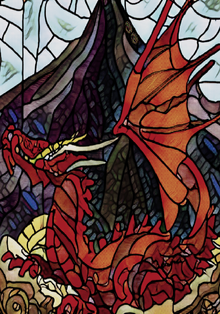 |
TEXT |
Nox, Weaver of Silk Accords
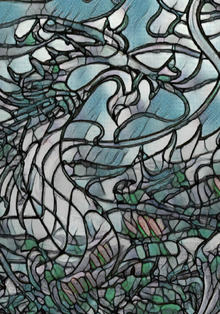 |
TEXT |
Valerius, Force for Change
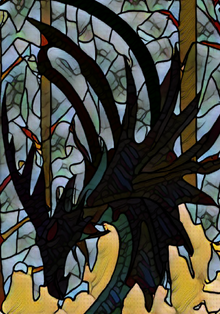 |
TEXT |
